Early Bird
Deadline
January 31, 2026
Judging
Date
May 18, 2026
Winners
Announced
June 10, 2026
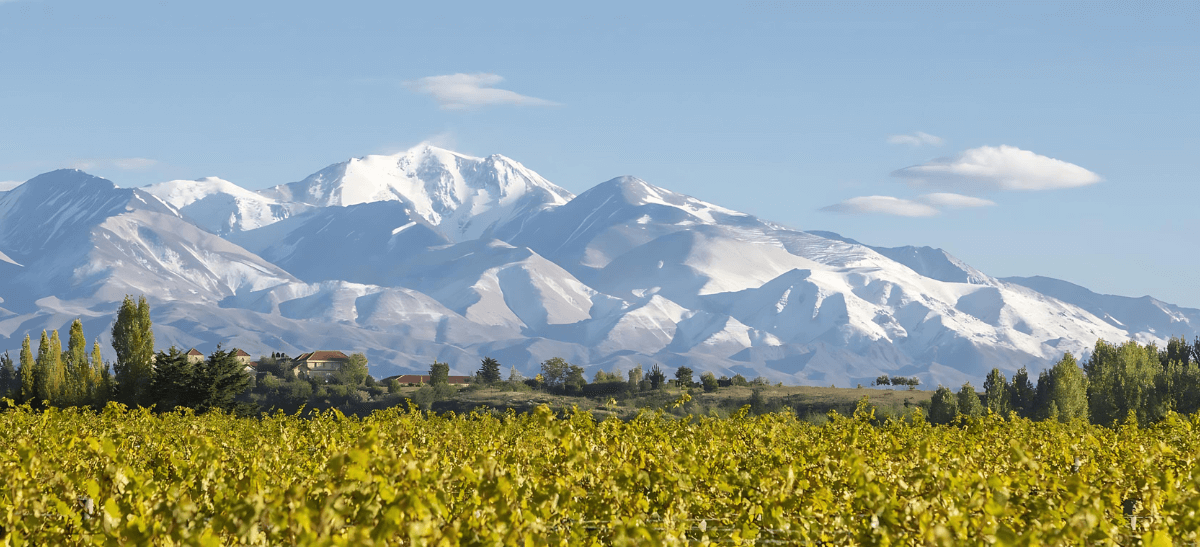
This is part two presenting the results of interviews by editor Charlie Leary with four wine industry leaders in Argentina on the topic of terroir, its importance, and essential facets. The interviewees included Dr. Ana Viola, CEO of Bodega Malma in San Patricio del Chañar, Neuquén, Patagonia; Dr. Laura Catena, Managing Director of Bodega Catena Zapata in Mendoza; Thibaut Delmotte, Head Winemaker at Bodega Colomé in the Calchaquí Valleys of Salta province; and Carina Valicati, Marketing and Communication Director at Durigutti Family Winemakers of Luján de Cuyo, Mendoza.
To read part one, please click here.
Charlie Leary asked about the importance of producing wines that express specific terroirs.
For Catena, terroir must inform the very essential practice and viticulture on the vineyard parcel level for the activity to even count as winemaking, while for Delmotte terroir is the critical differentiating factor in their wines, making them unique in a very competitive environment. Bodega Catena Zapata embraces terroir as a philosophy, while for Bodega Colomé the extreme terroir dictates the quality of winegrowing. For the team at Durigutti, their role as “interpreters of the terroir” and expressing the identity of the local IG is paramount, while Ana Viola believes terroir demands honesty from the winery, informing the consumer without the hype of the very unique conditions found in Patagonia.
These perspectives reflect the reality of each bodega, but each one gives superb importance to the terroir with slightly different inflections. Let’s see what each winery leader said:
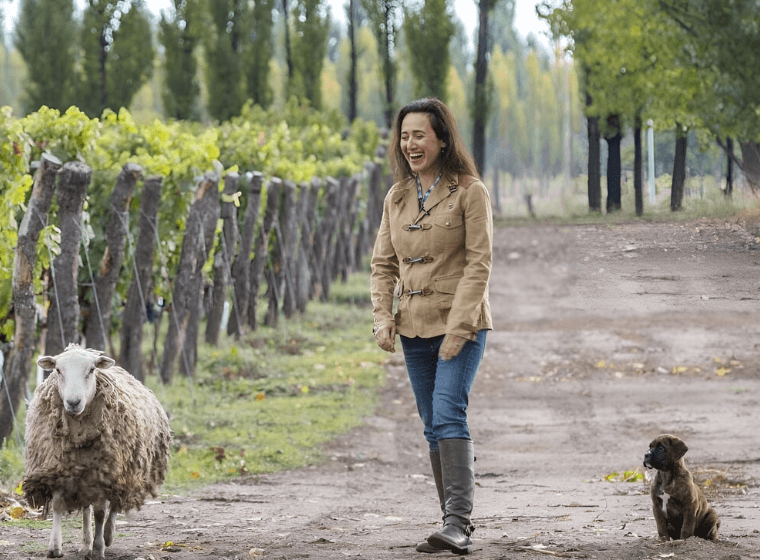
Laura Catena; source: Catena Zapata
Laura Catena: “I apply the same philosophy to terroir-based farming as I apply to child-rearing. A specific terroir—which could be a 1-, 2-, 5- or 10-hectare parcel—has individual needs in terms of water, cover crop, pruning, and compost requirement. One must be very careful to treat each terroir according to its needs and not standardize farming practices,” she stated.
“It’s the same with children, as a parent or teacher one must understand what a specific child needs and not treat all children the same. My personal theory of diversity applies to most parts of life. To me diversity is what makes life exciting for us and for other species on earth – the diversity of wines for example, that makes wine such an exciting beverage, and the diversity of thought that makes our lives so much more interesting and worth living.” In the final analysis for Catena, one cannot be a great winegrower without plumbing the depths of terroir, both scientifically and philosophically, and applying the accumulated knowledge to create superb wines, that express diversity. She summed up, “Not only is terroir-driven farming essential for making great wine, but I believe it should be a part of every wine producer’s philosophy.”
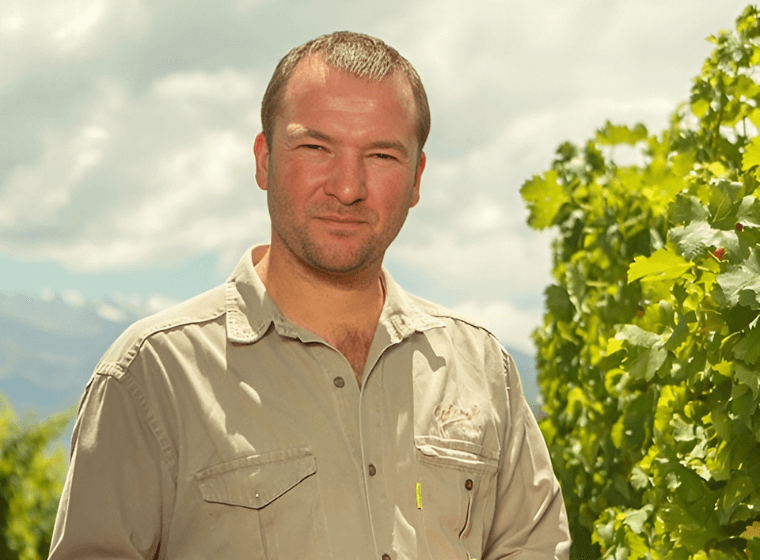
Thibaut Delmotte; source: Colomé
While Laura Catena works mostly in Mendoza (itself a vast diverse region), Thibaut Delmotte’s activities focus on four remote high-altitude areas. He stated, “Bodega Colomé is very remote, and logistics are both difficult and expensive. Additionally, our extreme viticulture does not allow for high yields. Therefore, the combination of logistics and yield significantly raises production costs, making it hard for us to compete with more accessible regions.” Notably, Colomé is Argentina’s oldest working winery (dating to the 1830s) and owns the country’s highest vineyard, appropriately named Altura Máxima at 3111 meters (10207 feet) above sea level. For more information on Thibaut Delmotte, check out: The mastermind behind the world’s highest vineyard and its finest wines—Thibaut Delmotte.
How does this situation affect his view of terroir’s importance? Delmotte said, “Making terroir-driven wines thus allows us to differentiate ourselves. Moreover, owing to the factors mentioned above and a very healthy climate that enables clean viticulture without agrochemicals, we have all the conditions to produce great terroir wines.”
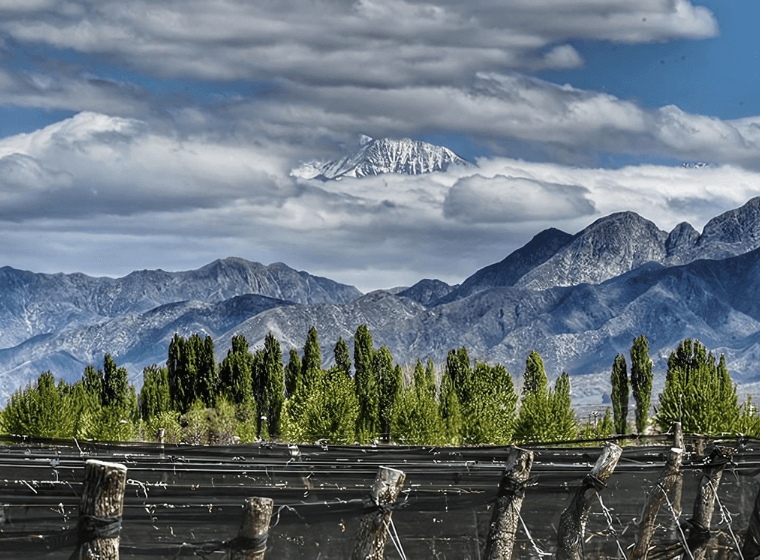
Durigutti Vineyards; source: Wines of Argentina
For Carina Valicati, terroir is “definitely” important to Durigutti Family Winemakers and has been so from the outset. “Our project,” she stated, “emerged precisely as the rediscovery and revitalization of a highly productive, high-quality area, focusing on the work and tradition of the people from the region (Las Compuertas).”
She shares much of Laura Catena’s perspective. “We learned about the different types of soil and obtained specific wine profiles from each one, which define us as interpreters of the terroir, especially of Las Compuertas. Since our beginnings in 2002, we have been guided by the motto "Interpreters of Our Origin" in all the projects of Durigutti Family Winemakers, as it forms the foundational basis of our vision and work philosophy.”
For her part, Ana Viola finds that transparency about a unique terroir will express its essence and importance. “I believe that the best thing wineries can do to help people better understand terroirs is to communicate the characteristics without any prior value judgments.” This is an intriguing view recalling that Bodega Malma cultivates vines in Patagonia. “We should provide only data, be transparent, and let consumers discover their own preferences,” she said.
Finally, Charlie Leary questioned how each winery could improve public understanding of Argentina’s distinct terroirs and the importance of this concept in marketing. He received similar responses from Laura Catena and Thibaut Delmotte; both emphasized that the public must taste the wines, each offering its own expression! For Valicati and Viola, however, communication involving terroir marketing, including storytelling regarding Argentina and its many localities, is an essential part of the job. This topic brought out the most divergent viewpoints among these four wine industry leaders.
Laura Catena and Thibaut Delmotte approach terroir with a more philosophical and practical mindset, focusing on how terroir defines their wines through viticultural practices and the tasting experience. Their shared belief that terroir is best expressed through wine itself—not through heavy marketing campaigns—speaks to their trust in the inherent quality of their distinct products. This view challenges conventional marketing strategies, instead positioning the wine’s authenticity and origin as the primary “selling point.” Also Read: Wines of Argentina: Pioneering Sustainability and Export Growth in the National Wine Industry
In contrast, Viola and Valicati show more concern for the communication aspect, particularly in relation to storytelling and protecting regional identity. Viola’s stance on the misuse of “Patagonia” as a brand emphasizes a deeper issue in global wine marketing—when terroir is reduced to a commodity, the authenticity of the wines produced in that region could be diluted. This reflects an underlying concern about the global commercialization of terroir, which is especially relevant for niche wine regions like Patagonia.
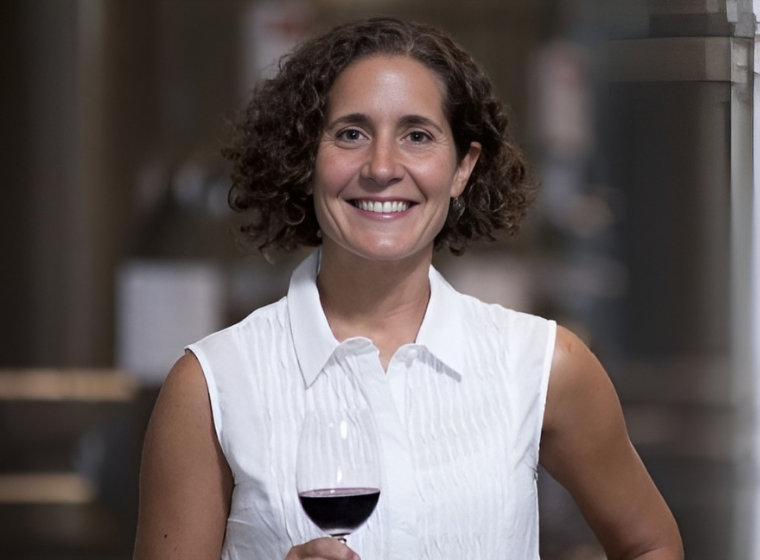
Ana Viola; source: Agrositio
Ana Viola: “When it comes to communicating terroir in marketing, for us, it is key. The first thing we communicate is Patagonia. It defines us and our identity—the remoteness, vast distances, and extreme climates. Then we talk about more specific places within Patagonia and finally focus on the micro-terroirs in the vineyard. But the main thing is to locate the consumer on the map.”
For Viola, terroir should not be branded. “For us, Patagonian identity is the most important aspect of our communication, along with the fact that we are a family-owned winery and that all our wines come from our vineyards. The biggest threat we, as Patagonian producers, face is the attempt by large companies to use the word Patagonia as a brand, rather than as a place of origin. By doing so, they appropriate our identity and history.”
Likewise, Carina Valicati believes “that wineries, collectively, must learn to use a common language that allows for a clear explanation of our wine regions, giving each one its own identity to appreciate their uniqueness. All winemakers and wine communicators face the challenge of helping consumers better understand the concept of terroir in viticulture, so they can grasp the immense work and study behind every place of origin.”
Valicati definitely finds that this is an evolving challenge. “In Argentina’s case, we need to recognize how vast and diverse the current wine map is, from north to south. Once we identify the major zones, we must delve into communicating and understanding sub-zones, micro-regions, and specific estates.”
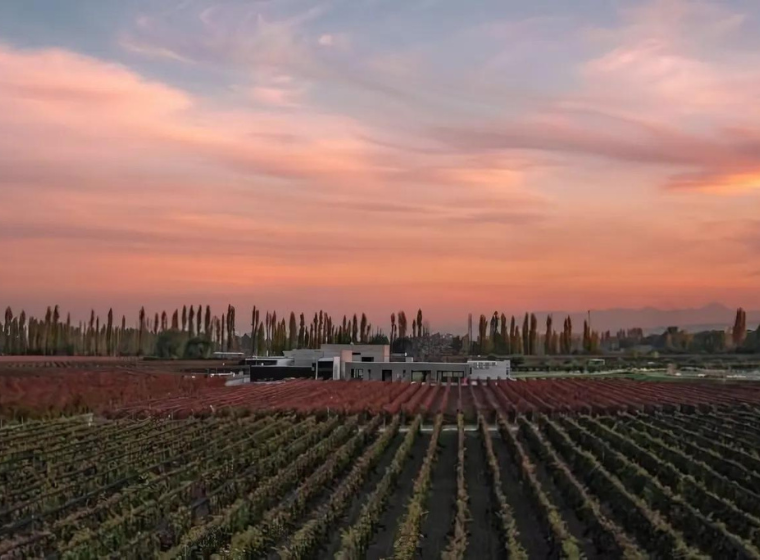
Durigutti vineyards; source: Wines of Argentina
One must understand that Valicati spoke from the perspective of a winery that is recuperating and reinvigorating the wine-growing tradition of a single region. “At Durigutti Family Winemakers, the concept of terroir has been our differentiating element since our beginnings in 2002, preserved under the same motto and continuing to be the essence of all the winery’s communication: ‘Interpreters of Our Origin.’” The task before them involved human heritage as well as heritage varieties. “Over the years, we have deepened our terroir work, reaching a profound understanding of the Las Compuertas IG and, in particular, our vineyards at Finca Victoria, where we lead a sustainable project focused on heritage rescue and recovery. We craft wines that are highly terroir-driven, with minimal intervention in the winery but with the utmost care in the vineyard.”
Valicati continued on this theme, which encompasses an ample definition of terroir: “We preserve artisanal work in the vineyard, recover all the old genetic material, rescue heritage varieties like Criolla, preserve century-old pre-phylloxera vines like our 1914 Malbec, and work with soil studies that, for example, gave rise to our Proyecto Las Compuertas Malbec 5 Suelos, made from a deep understanding of five distinct soil profiles in different parcels within the same vineyard.”
She had a different perspective on branding and marketing terroir from the other three wine industry leaders. “The origin of many of our brands and their storytelling stems from the concept of terroir and micro-terroir, producing sustainable, organic, and also natural wines with a strong connection to the landscape and place, which is reflected in every label and message. Today, at Durigutti Family Winemakers, we speak of the winery’s terroir as a distinctive character, and this concept is intrinsic to the entire team’s work philosophy.”
By contrast, both Thibaut Delmotte and Laura Catena emphasized that the vital expression of terroir lies in the wine itself, not the brand identity or marketing message. Delmotte said: “The best way to demonstrate the importance of terroir is by tasting wine! In Argentina, we are fortunate that our emblematic variety, Malbec, is very receptive and adapts well to different terroirs.
“In our case, to show the importance of terroir in our wines, we will produce single vineyard Malbecs from each estate, each one expressing itself differently:
- Lote Especial Malbec La Brava, 1,700 m
- Autentico Malbec, 2,300 m
- El Arenal Malbec, 2,600 m
- Altura Maxima Malbec, 3,111 m
And a wine that combines all four altitudes:
- Estate Malbec”
Laura Catena appeared to agree. “I generally don’t use the word ‘marketing’ because it implies that we are trying to influence consumers. I honestly believe that if we make the most delicious and authentic wines and open bottles as often as possible, wine lovers will seek out our wines.” Also read Argentina Unveiled: Discover Her Best-Kept Wine Secrets
Catena then highlighted how successful this business attitude has been. “We were recently awarded the #1 World’s Best Vineyard 2023 for our wines, vineyards, sustainability efforts, and hospitality experience at Catena Zapata. The award was the result of 500 anonymous votes by food, travel, and wine writers. This is a vote for our terroir and specifically for our Adrianna Vineyard which has been called the ‘Grand Cru of South America.’”
“I was trained as a medical doctor and never studied business or marketing. My father once told me that if wine drinkers fall in love with the taste of your wine, that is the best marketing.” This, of course, offers an important lesson for the on-premise trade as well as importers and distributors. “I believe that a wine producer’s job,” said Catena, “is to make as many microvinifications as possible to find the best terroirs, the best expressions of a vineyard site, to make the most delicious wine. If this is terroir marketing, then I declare that it is the most important kind of marketing.”
[[relatedPurchasesItems-61]]
The insights from these four Argentine wine leaders reveal terroir’s central role in shaping not only wine quality but also winery identity and communication strategies. Whether expressed through meticulous vineyard management, as in the case of Laura Catena, or through a careful balance of storytelling and transparency, as Ana Viola advocates, terroir stands as the essential foundation for understanding and appreciating Argentine wine. The divergence in views on marketing suggests that while terroir must always be authentically expressed, its communication can vary greatly depending on the winery’s ethos and the region’s characteristics.
As Argentina’s wine industry continues to grow and mature, these conversations around terroir will become even more crucial. Each winery’s approach—whether focused on high-altitude expressions, heritage varieties, or regional distinctiveness—will play a vital role in defining Argentina’s place in the global wine market. Ultimately, the challenge for the country’s wine producers will be to continue to honor their unique terroirs while finding innovative ways to share these stories (and wines!) with the world.
Header Image Source: Catena Zapata
Also Read:
How J. Lohr's Family-Run Winery Model Leads in Sustainability and Quality - Part One
How J. Lohr's Family-Run Winery Model Leads in Sustainability and Quality - Part Two
Insights From Top Sommelier Thomas Brenner On How To Grow Your Restaurant Sales
Enter your Wines now and get in front of top Sommeliers, Wine Directors, and On-Premise Wine Buyers of USA.
